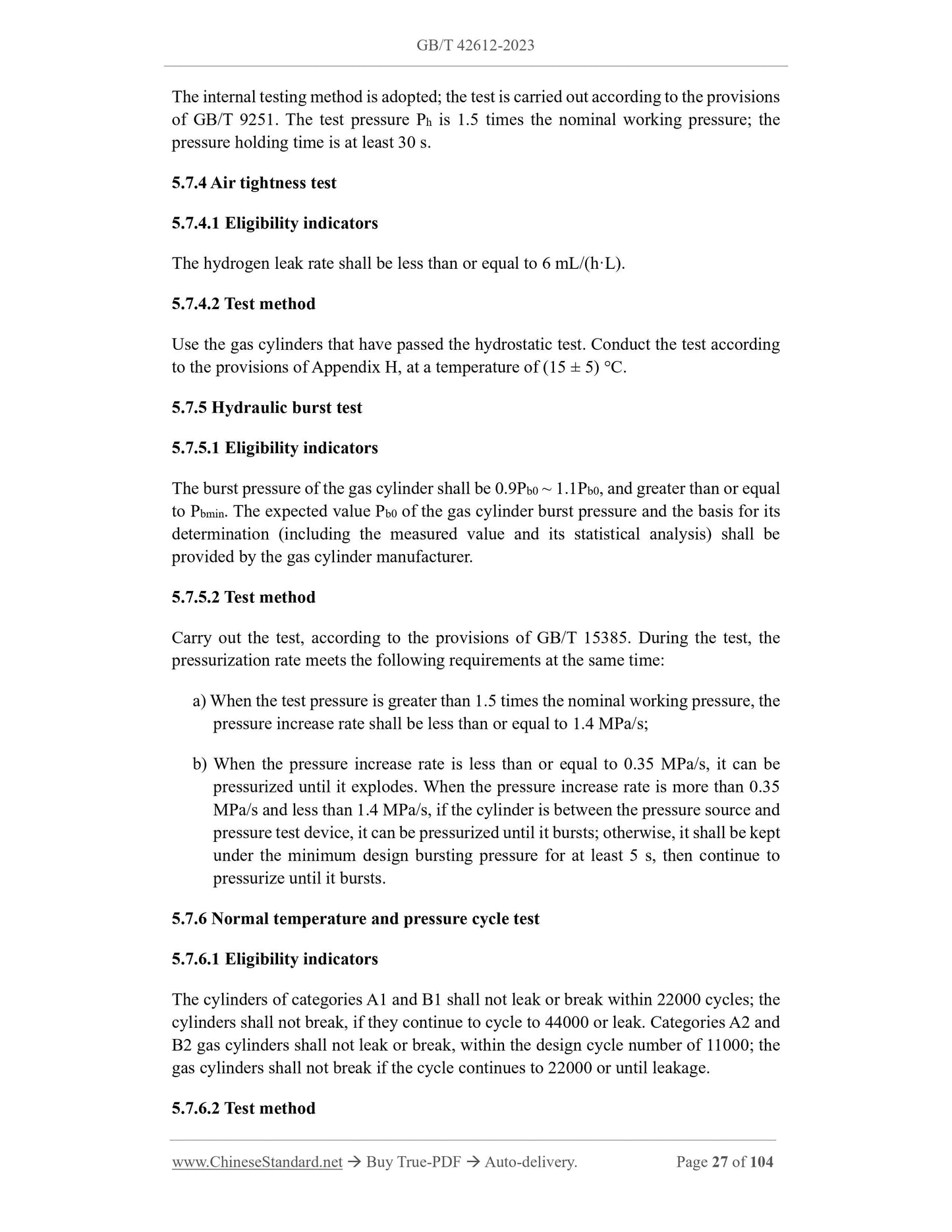1
/
of
12
www.ChineseStandard.us -- Field Test Asia Pte. Ltd.
GB/T 42612-2023 English PDF (GB/T42612-2023)
GB/T 42612-2023 English PDF (GB/T42612-2023)
Regular price
$995.00
Regular price
Sale price
$995.00
Unit price
/
per
Shipping calculated at checkout.
Couldn't load pickup availability
GB/T 42612-2023: Fully-wrapped carbon fiber reinforced cylinders with a plastic liner for the on-board storage of compressed hydrogen as a fuel for land vehicles
Delivery: 9 seconds. Download (and Email) true-PDF + Invoice.Get Quotation: Click GB/T 42612-2023 (Self-service in 1-minute)
Newer / historical versions: GB/T 42612-2023
Preview True-PDF
Scope
This document specifies the type, parameters, classification and model, technicalrequirements, test methods, inspection rules, installation, protection, marking,
packaging, transportation and storage requirements of fully-wrapped carbon fiber
reinforced cylinders with a plastic liner for the on-board storage of compressed
hydrogen as a fuel for land vehicles (hereinafter referred to as cylinders).
This document is applicable to the design and manufacture of refillable cylinders, which
have a nominal working pressure of 35 MPa and 70 MPa, a nominal volume greater
than or equal to 20 L and not greater than 450 L, an operating temperature not lower
than -40 °C and not higher than 85 °C, are fixed on motor vehicles for containing
hydrogen fuel.
Hydrogen gas cylinders, which are used for hydrogen fuel cell urban rail transit,
hydrogen ships, hydrogen aircraft, hydrogen power generation devices, etc., can refer
to this document.
Basic Data
| Standard ID | GB/T 42612-2023 (GB/T42612-2023) |
| Description (Translated English) | Fully-wrapped carbon fiber reinforced cylinders with a plastic liner for the on-board storage of compressed hydrogen as a fuel for land vehicles |
| Sector / Industry | National Standard (Recommended) |
| Classification of Chinese Standard | J74 |
| Classification of International Standard | 23.020.30 |
| Word Count Estimation | 79,750 |
| Date of Issue | 2023-05-23 |
| Date of Implementation | 2024-06-01 |
| Issuing agency(ies) | State Administration for Market Regulation, China National Standardization Administration |
Share























